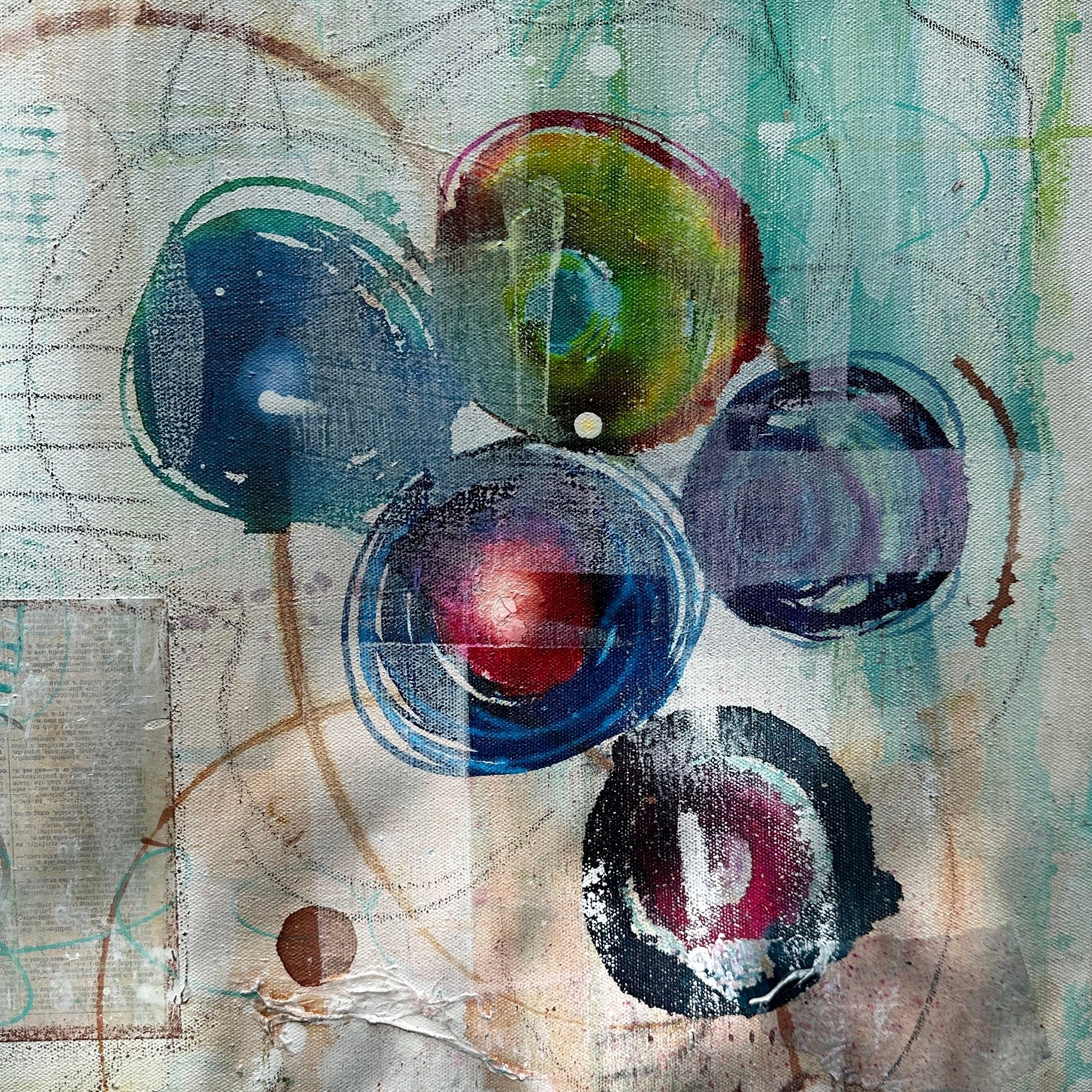A world of possibilities
In my last two blog posts, I delivered The Ultimate 100, mixed media materials to send your art in new directions. A list of 100 different ways to create texture, dimension and visual impact in your mixed media art. How you tried out any new ones from the list yet?! If you have and want to share, please do!
Sometimes, just applying one art medium over another gives a cool effect.
Why not make some incredible art by blending your medium and materials? You can push yourself creatively by testing out new combinations, or add in new materials from The Ultimate 100. I’ve chosen a few of my favourite ways to do just that to share with you. I know that once you’ve started down the mixing mixed-media trail, you’re not going to want to stop.
Acrylic + Oil:
Use oil paints or oil based paint markers (Sharpie brand makes good ones!) on top of your acrylic paint. Oil markers can be used to make decorative dots, lines, drawings, and lettering. I really like to use oil paint to make the colours pop in part of a finish portrait. It's always best to layer oil over acrylic and not the other way around.
Incorporating Dissolving Paper:
Dissolving paper has endless possibilities in mixed media art. Layering on papers, fabrics, add stitching, or even other dissolvable materials to create interesting multi-dimensional effects. Try stamping by pressing textured objects onto the paper before or as its dissolving, this will create imprints that add depth and complexity to your artwork. (I get my dissolving paper on Amazon)
Coffee and Charcoal:
I love the warmth that coffee stains add to my art, add marks with charcoal and wow! The earthy tones of coffee create a subtle backdrop, with charcoal adding depth and contrast. Charcoal works well with quite a few mediums, including watercolour, gouache, acrylics, soft pastels and chalk.
Plaster and Found Objects:
Use plaster to integrate found objects. Create textured surfaces with plaster and emb found items such as keys, buttons, or jewelry. The solidity of plaster with the randomness of found objects makes a powerful statement.
Sand and Oil Pastels:
I have fun creating with oil pastels on top or a sand substrate. I mix medium with sand to create the base. The rough texture of sand in contrast to the smooth and vibrant colours of the oil pastels can take your art into a whole new dimension.
Oil Pastels and Embroidery:
Try incorporating embroidery with oil pastels. Draw your design with the pastels and then sew patterns onto the surface. This combination produces texture and a 3rd dimension to your artwork.
Acrylic and alcohol inks:
This is really fun art play! Try combining alcohol inks with acrylic inks. Apply the alcohol ink on top of acrylic rather than underneath other the acrylic may remain tacky. Work in layers, make designs, add drops of alcohol ink into your wet acrylic ink….
Gold leaf on paint skins:
Adding gold leaf to textured surfaces is a little more tricky, but so worth the effort. I will peel the dried acrylic paint from my palette, adhere it to my substrate and then apply golf leaf on top. Not sure what a paint skin is? It is dry acrylic paint. I create different shaped paint skins by applying acrylic on parchment paper, letting it dry and peeling it off to include in art.
Combining different media and materials can enhance your artwork. It’s so freeing and lets you push yourself in unexpected directions. I hope these mixed media art techniques will inspire you to step out of your comfort zone and try something new.
I’d love to hear how you’re mixing it up in on your mixed media journey, so please reach out on instagram or email me at art@delightrogers.com .





